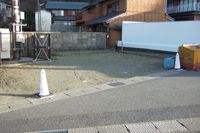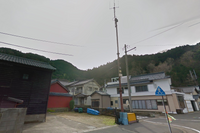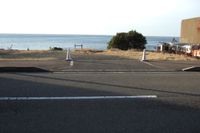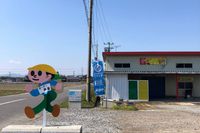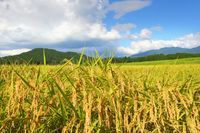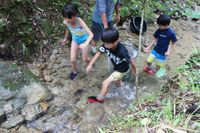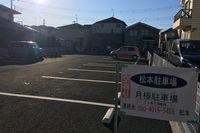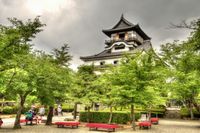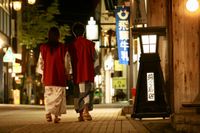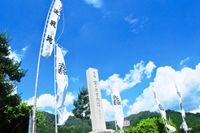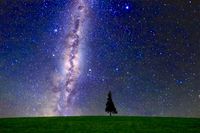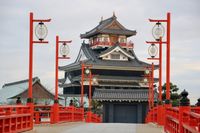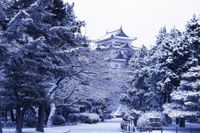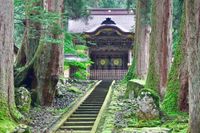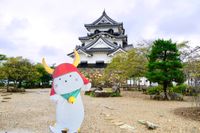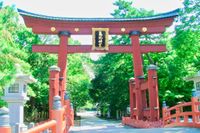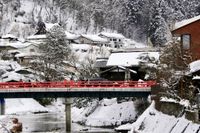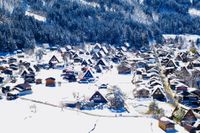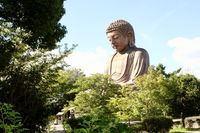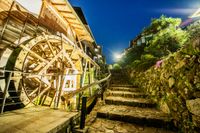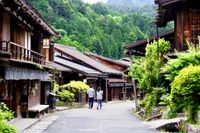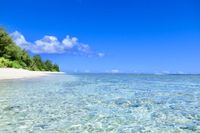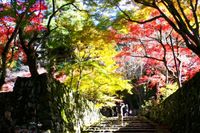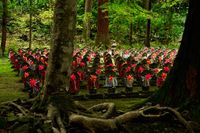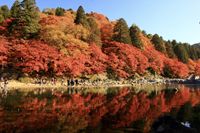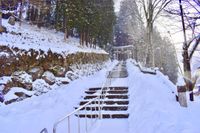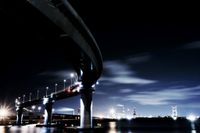Monet's Pond
岐阜県/関市板取

Description
This is a reservoir in Nezu Shrine, in Gifu. From 1999, various species of waterlily such as the pygmy lily and spatterdock lily were planted here, and koi carp, which were initially not available in the area, were brought over and bred in this area. Due to this series of events over time, the area ended up resembling the lily ponds illustrated by Claude Monet.
Homepage
Address
Nearby Car Night Spots
Shin Meishin Suzuka PA (inbound) RV Station Suzuka * With Power!
¥2,200〜
/ per nightMie Yamamotocho, Suzuka-shi
4.3
(155)(Power supply available/facilities for rain) Apples bonfire station Fruit Garden Kitazawa
¥4,000〜
/ per nightNagano Oshima, Matsukawacho, Shimoina-gun
4.9
(21)(Bonfire BBQ) Chita Mihama Noma Beach Station
¥3,500〜
/ per nightAichi Noma, Mihamacho, Chita County
4.7
(42)Nearby Activities
All you can eat rice balls and rice reaping in the rice field in the mountains
¥2,000〜
/ per personShiga Fujise, Taga-cho Inukami-gun
3.0
(0)Catch and eat char in a beautiful valley in the mountains
¥2,000〜
/ per personShiga Fujise, Taga-cho Inukami-gun
3.0
(0)Ranking Stations
Vanlife BASE | 45 min. from Narita Airport / Perfect for campervan travel/A seaside town rich in nature/Japanese countryside town/welcome traveler
¥7,000〜
/ per nightChiba Koseki, Kujukuri-machi, Sambu-gun
5.0
(61)(Bonfire BBQ) Chita Mihama Noma Beach Station
¥3,500〜
/ per nightAichi Noma, Mihamacho, Chita County
4.7
(42)Nearby Drive Spots
Inuyama Castle
This is a castle that was built in 1469 by Oda Nobuyasu (Oda Nobunaga's uncle). It is one of Japan's 12 famous castles, and one of 5 designated as a national treasure. One could say that it is representative of the history of the turbulent history of competition and battle between the nobles Oda Nobunaga, Toyotomi Hideyoshi and Tokugawa Ieyasu. Being situated on top of a small mountain, the views of the river are also quite something to behold.
Gero Onsen
This is a famous hot spring in Gero City. With 1000 years of history, it is named as one of Japan's three best onsen, by Hayashi Razan, a neo-Confucian philosopher. There were many times where the area was destroyed by floods of the Hida River, but it was restored each time, and there is a full onsen town along the river. Hoba Miso paste (made from Magnolia leaf) is a specialty product in this area.※Credit:下呂温泉観光協会
Sekigahara Battlefield
Here we can witness historical traces of the "Battle of Sekigahara" which is said to be one of the greatest and fiercest battles in Japan's history after the political strife following the death of Toyotomi Hideyoshi in 1600. The East Army (Tokugawa Ieyasu, Tokugawa Hidetada, Yuki Hideyasu, Kuroda Nagamasa) and the West Army (Mori MototeruIshida MitsunariUkita HideieUesugi Kagekatsu) fought and Tokugawa Ieyasu ultimately obtained ultimate power. In 1603 he established the Edo Shogunate. There are numerous historical walking courses where visitors can see the battle paths and underground paths used.
Rokuroshi Kogen
This is a plateau located at the foot of Mt.Kyogatake mountain range and extends to an altitude of about 400 to 700 m. It forms a gentle fan-shaped terrain, and the night sky is ideal for star gazing. In addition, visitors can enjoy seeing the dairy cattle grazing, barbecues, and outdoor baths etc.
Kiyosu Castle
This is a castle founded in 1405 by Shiba Yoshishige. It was widely known as the headquarters of Oda Nobunaga in 1555, and subsequently the Toyotomi and Tokugawa families became the castle owners, and it was used until 1613. The present castle tower reproduces the ornate Momoyama culture of the Azuchi-Momoyama period(1568-1600).
Nagoya Castle
This castle was built by Tokugawa Ieyasu in 1609, one of Japan's three great castles. It was used as a residence of 17th generation of the Tokugawa family until the Meiji era(1868-1912). The Golden Shachihoko (a Japanese sea creature with the head of a tiger and body of a carp) became the symbol of Nagoya. The castle is known both as Golden Shachihoko Castle and Golden Castle.
Eiheiji Temple
This is a temple of the Soto sect built in 1244 by Dogen. The temple is named after the Buddhas ShakanyoraiMirokubosatsuAmidanyorai, with the wish for eternal peace. It is situated deep in the forest of around 600 cedars, and there are around 200 priests here that strictly follow the buddhist teachings. The temple is also famous for being admired by Steve Jobs, who was famously a believer in God.
Hikone Castle
This is a castle that was built by Ii Naokatsu in 1622. It is famous as one of Japan's only 12 remaining castles, and is one of five that is designated as a national treasure. From the top of the tower, visitors can see magnificent views of Lake Biwa, There is also a moor boat that is still in use, from which Hikone Castle can be viewed, and whose views can be enjoyed along with the seasons.
Kehi Jingu Shrine
This is a shrine which was founded by the Empress Jingu in 199 AD. The shrine deity was enshrined by Izasawake no kami, Emperor Chuai, and Empress Jingu. Four companies named Yamato Takeru No Mikoto Emperor OjinToyotama-himeTakeshiuchi no Sukune are also enshrined here. It is an entrance from Hokuriku to Kinai, and since it is a key gateway to Korea and China, it was regarded as "Hokurikudo general guardianship" and was held in high importance. It also has one of the three largest Torii gates in Japan.
Hida Takayama Onsen
This is an Onsen near Hida Takayama. It is a new onsen that is established in an historic castle town with traditional style buildings and the Takayama Festivals. The alps become completely awash with white snow during the winter, so taking a warm bath is ideal to warm the body whilst looking out at the snowy landscape.
Shirakawa-go
This is a village situated in northern Gifu, and registered as a World Heritage Site. It is known as an area with one of the highest levels of snowfall, and due to this, the roofing of houses is set at a steep angle to deal with the snow fall. Some of these houses still exist nowadays, and are still in use.
Shurakuen Garden Buddha
This Buddha statue became witness to the marriage of the Emperor Showa in 1927 by Yamada Saikichi. It is a statue of one of the great Buddhas known as Amida Nyorai, with a height of 19 meters, larger than Buddha statues in places like Kamakura and Nara. Inside the park there is a camping area and public bathing facilities.
Magome-Juku
This is the 43rd town inn which is located on the Nakasendo road, which links Tokyo (Edo at the time) and Kyoto, built during the Sengoku era(1467-1600). It has the traditional cobbled stone paths that were present originally, and is one of Japan's few traditional villages whose buildings are preserved today. Along with Tsumagoi-Juku it is one of the flagship tourist destinations of Kiso road.
Tsumago-Juku
This is the 42nd town inn which is located on the Nakasendo road, which links Tokyo (Edo at the time) and Kyoto, built during the Sengoku era(1467-1600). It has appeared in Ukiyo-e art and Utagawa Hiroshige, and is one of Japan's few traditional villages whose buildings are preserved today. Along with Magome-Juku it is one of the flagship tourist destinations of Kiso road.
Mizushima Island
This is a small uninhabited island at the tip of Tsuruga Peninsula. The area is surrounded by shallow beaches and rock formations, and due to the beauty of the clear waters, it is known as the "Hawaii of Hokuriku". The island is only accessible during the 2 month period from Mid July until the end of August.
Saimyoji Temple
A Tendai sect temple built by Sanshu in 834 AD. The primary object of worship is Yakushi Nyorai, and Minamoto Yoritomo is said to have come here to pray for war victory. Along with the temples Kongorinji Temple and Hyakusaiji Temple, it is one of the "Koutousanzan" destinations (east lake three mountains). It is also famous for autumn leaf viewing, attracting numerous visitors each year.
Kongorinji Temple
This is a Tendai sect temple built in 741 by Gyoki. The object of worship is Sho Kannon and after it became assigned as a holy place of Buddhist training by the Ennin Priest who practiced at Mount Hiei, it became the branch temple of Enryakuji Temple. It is famous for the countless Ksitigarbha (buddha that looks over children, travelers and the underworld) known as the "Thousand Jizou". As the main hall is separated from the main gate, it is thought that it escaped burning down from the attack of Oda Nobunaga.
Korankei Gorge
Located in Aichi Prefecture, this is a valley formed in Tomoe River. Many tourists visit Taigetsukyo Bridge in the autumn season, where the autumn leaves and "katakuri" flowers (dogtooth violet) can be seen.
Keta Wakamiya Shrine
This is a shrine whose construction date is unknown. It houses the God known as Okuninushi no MikotoMii no Kami. This place is also home to one of Japan's three Hadaka festivals (where a minimum amount of clothing, normally a loincloth) is worn, known as "Furukawa festival", which has been performed since the Edo era(1603-1868). The resonant sound of the drum rings out during the festival proceedings. There are many fans of the anime "Your name" who make the pilgrimage here in dedication to the anime piece.
Yokkaichi Inaba Port Line
This is a new road that was opened on 1 April 2018 in Yokkaichi. There are various factories and oil plants along the road, creating a dramatic view. The night view has given it the name "Dragon road" and is quickly becoming popular among photographers. ※ドラゴンロード © Kenichi_Inagaki クリエイティブコモンズライセンス(表示4.0 国際)https://creativecommons.org/licenses/by/4.0/




